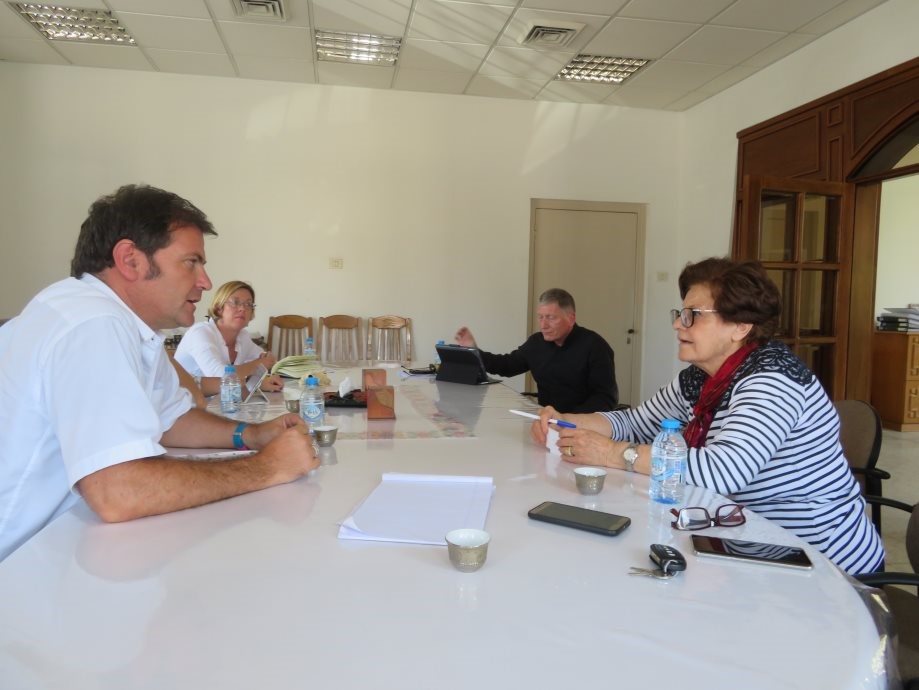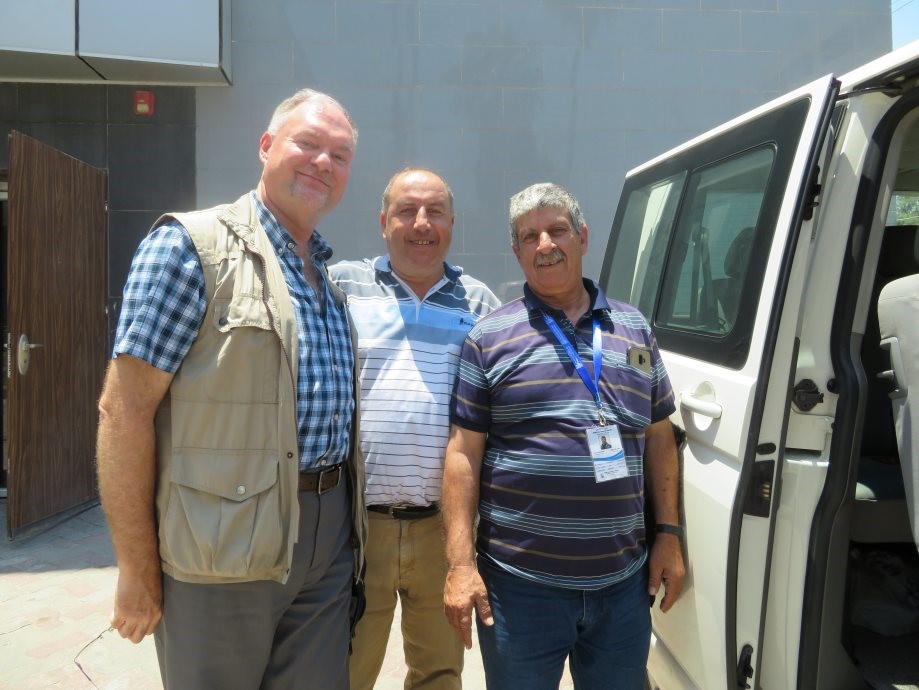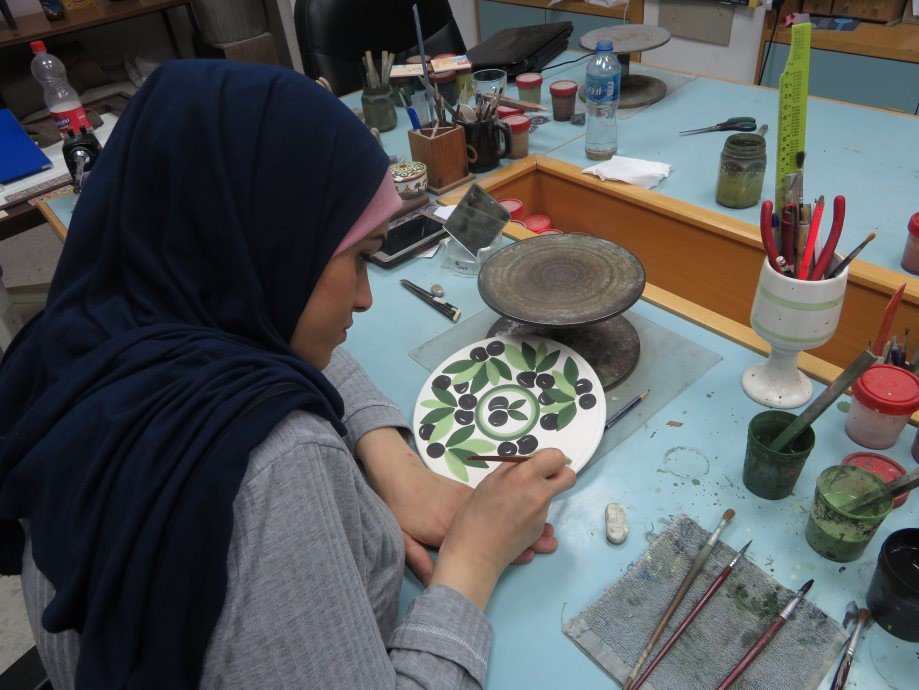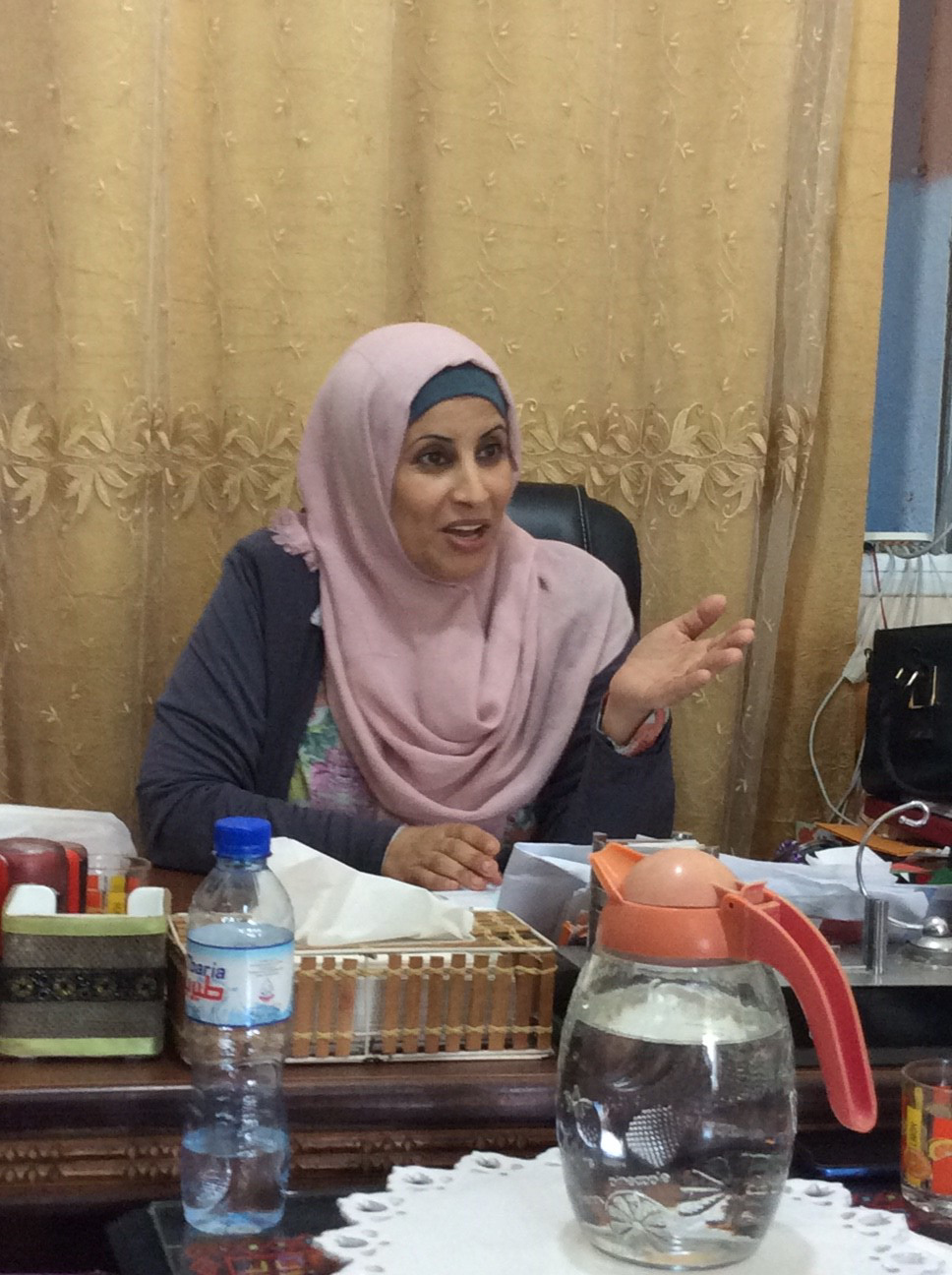A Letter from Doug Dicks, serving in Israel and Palestine
July 2019
Write to Doug Dicks
Individuals: Give online to E200516 for Doug Dicks’ sending and support
Congregations: Give to D506222 for Doug Dicks’ sending and support
Churches are asked to send donations through your congregation’s normal receiving site (this is usually your presbytery)
Dear Family and friends,
It’s watermelon season in Gaza. As our van makes its way through Gaza’s streets and alleyways, we see donkey carts laden with watermelons, cantaloupes, bananas, fruits and vegetables traversing the streets.
Though it’s only mid-June, the hot Mediterranean sun beats down on this small strip of land that is home to almost 2 million people, the majority of whom are refugees from the 1948 Arab-Israeli war. The strip is only about 25 miles long and anywhere from about 4–8 miles wide. The total land area is only about 141 square miles, yet the population density is over 13,000 persons per square mile! Forty-two percent of the population of the Gaza Strip is under the age of 18. Twenty percent is under the age of five!
I’m travelling into Gaza again for the first time in a year, with a small delegation of colleagues from the Church of Scotland. We will be visiting our partner organizations and staying for two days and nights, if the situation allows.
Our first stop is the Family Health Care Center, run by the Middle East Council of Churches’ Committee for Refugee Work. Here, we observe firsthand the results of the Israeli blockade on the Gaza Strip, which has been in place since Hamas was elected in 2006 — the effects of malnutrition, anemia due to poor living conditions, bad water and lack of proper medications. Though the medicine cabinets of the clinic seem to be fairly well-stocked, there is a short supply of medicine to treat anemia.
Next door, a psychosocial unit is ministering to young girls who have faced trauma. Extremely high unemployment, family violence, the loss or injury of a loved one who was either shot or wounded at the weekly border fence protests … The list goes on and on.
The girls perform several dances for us and invite the female members of our delegation to join them. Singing, dancing, and clapping, they seem to lose themselves in another world as they circle the room. One can only hope that this kind of therapy will help these young women overcome the sense of grief, isolation and despair that many of them experience in their daily lives. Just before departing, we are offered the hospitality of thick, Arabic coffee and chocolate bars.
Our next stop is the Ahli Arab Hospital, the only Christian-run hospital in the densely populated Gaza Strip. We listen to the staff as they tell us about the current realities for people living in the Gaza Strip. The 80-bed hospital can expand to up to 100 beds in an emergency situation. Currently, they are operating at 50 beds. We hear of a very unstable situation that has been unfolding within Gaza for some time now, with high instances of psychosocial trauma and a waiting list of at least 10,000 people for much-needed surgeries. In addition to the hospital’s normal work activities as a hospital, it also offers community programs that run underweight child and baby clinics, perform early-detection breast cancer screenings, provide psychosocial support, and operate a burn unit.
The Ahli Arab Hospital’s mission is to glorify God and bear witness to His love as manifested in the life of Jesus Christ. Ahli Arab Hospital is doing this through the provision of high-quality, patient-centered health care services and maintains the financial viability of its operation. The hospital offers to serve all who seek treatment without prejudice to any religious or ethnic community, irrespective of social class, gender and political affiliation. These services are delivered in a spirit of love and service. And the hospital director tells us that, while their services are nearly free, people contribute what they can in order to feel that they are actively participating in their own health care.Ahli Arab Hospital recognizes the value of its staff and volunteers and promotes equal and compassionate treatment with dignity and respect to all. We are grateful for the work of Hospital Director Ms. Suhaila Tarazi and her dedicated team, including Hospital Administrator Miss Samira Farah and Medical Director Dr. Maher Ayyad. If you wish to make a donation to the work of the Ahli Arab Hospital, you may do so by clicking here.
Next, we call upon the Atfaluna Society for Deaf Children, where Mr. Hamdi Shaqurra meets with us to brief us on the situation in Gaza. We also hear from him that the situation in Gaza is unpredictable and that 2/3 of the population is at the bottom of the social strata. The chronic closure of the Gaza Strip has created a humanitarian crisis, with unemployment at upwards of 44%, and approximately 85%–90% of the people dependent on international humanitarian aid. Though there appears to be no shortage of goods, it is access to those goods and the ability to purchase them that have hit the community the hardest. We are apprised of the continuation of the “Great March of Return” protests, and of the excessive use of force by the Israeli military on those who have gone out to demonstrate. Many snipers have been employed by the Israeli army to kill, maim and assassinate the protesters, even though the demonstrations have been well-organized and peaceful, and despite the fact that through them people are merely protesting to proclaim their rights and the ability to demonstrate.
In the midafternoon, we stop at a local restaurant where we are met by additional staff. We are offered cool drinks of water and lemonade with fresh mint while we engage in conversation before sitting down to a sumptuous lunch of salads and fish by the Mediterranean Sea. Here, we also meet up with Dr. Issa Tarazi, our primary host for our visit in Gaza. It’s another opportunity to be updated on current conditions in the Gaza Strip, and to get reacquainted with friends and colleagues. Afterwards, we head to the Marna House Hotel, our home for the next two nights.
Just before sunset, several of us take a short walk down to the Mediterranean Sea. Here we encounter young people, children and families out to breathe in the cool sea breeze in the early evening hours. As the sun sinks below the Mediterranean, teenagers and young boys climb on what looks to be a seawall or breakwater made of rubble. What must their hopes and dreams be, I wonder, as they gaze out to sea? The entire waterfront takes on a carnival-like atmosphere, with street clowns, and vendors selling everything from coffee to candies and ice cream to all sorts of small trinkets. Rides in battery-powered cars are offered to the smaller children. We must appear like aliens to them as we walk along, and many of the young people wish to engage in conversation with my colleagues and me and ask to take selfies with us. They are impressed that we speak some Arabic. They ask us where we are from and what we think of the West Bank and Jerusalem. “Which is more beautiful?” they ask us. “Gaza, or the West Bank?” We assure them that we find Gaza to be quite beautiful, and they seem pleased to hear this.
My morning shower is not much more than a trickle of water, but I am grateful for what water there is to be able to wash. Clean water is a huge problem for the Gaza Strip: much of the water is now not fit for human consumption.
Following breakfast, we head out for a visit to the Atfaluna Society for Deaf Children. Atfaluna is Arabic for “our children.” This first-rate school was founded by Mrs. Geraldine Shawa in 1992, and its mission is to improve the lives of deaf persons in the Gaza Strip by empowering them socially, culturally, economically and civilly.
Executive Director Mr. Naim Kabaja tells us that the school has had to cut the salaries of its staff by at least 30% in order to continue to operate, and it has also reduced the number of students from 300 to 250. School buildings have been converted to solar energy in order to save running costs. Since it is summertime, there are no students present, and we use the remaining time to visit the workshops where many beautiful items are made from ceramic, wood, embroidery and cloth. No visit to the Gaza Strip would be complete without a stop at the gift shop at Atfaluna. We take with us items to be sold at the Sunbula Craft Shop at St. Andrew’s Church of Scotland in Jerusalem. One can also visit Atfaluna’s online craft shop.
If you wish to support the work of the Atfaluna Society for Deaf Children financially through the PC(USA), you may do so here.
We then travel south to Nuseirat and to the Women’s Cooperative of the Nuseirat Refugee Camp. Here, we meet with Mrs. Samah Ghayad and a few of the other women who make up the cooperative.
“What shall I tell you about our lives and about the situation in Gaza?” begins Samah. “Now, there is a new kind of woman,” she tells us, referring to the women of the camp who are confronted with the effects of high unemployment, drug addiction, debts, spouses who are injured or in prison, and psychological trauma. She tells us that 51% of the women in Gaza are subject to some form of domestic violence. And she says that while the needs are increasing, the capacity to help many of these women is diminishing. The Nuseirat Women’s Cooperative trains women in hair styling, dressmaking and embroidery. “Women are a source of peace and love,” says Samah. “We have a right to life, and a right to live.”
In the afternoon, a few of my colleagues and I head over to what was once a high-rise building known as the Italian Compound. The 13-story structure was reduced to a 3-story shell of its former self following direct hits on it by an Israeli F16 Fighter jet and seven consecutive missile strikes in August 2014. You may read more about this here.
A Palestinian artist by the name of Ali al Jabali from the Gaza Strip has used the building as his canvas and has entitled his work “Dreamers Among the Rubble.” We were anxious to see his art firsthand.
I wander through the building and see the rooms that Ali painted in and on, snapping pictures along the way. I find his artwork to be both beautiful and haunting and am grateful to have the opportunity to see it. Follow this link to see a short clip of Ali and his artwork.
On our last evening in Gaza, we divide our small group into two and visit with two Christian families who live in Gaza. Earlier, we were told that the number of Christians does not exceed more than about 1,050. I accompany pastor John McCulloch and his wife, Annette, to the home of the Swailem family. We are greeted by smiles and a very articulate young man named Boulos, and during our conversation, we learn that he is studying to become a dentist. He introduces us to his parents and to his younger brothers Khader and Ameer. We soon learn that Khader is a cello player, and he agrees to entertain us by playing a few songs. Ameer plays the trumpet and also agrees to play a song or two for us. We talk, laugh, exchange stories, and after coffee and a sweet, known in Arabic as “Layali Lubnan” — “the Lebanese Nights” — we say our goodbyes. If you’d like to know how to make this sweet custard-like dish with pistachios and a sweet, sugary syrup, click here.
During a late afternoon/early evening visit with leaders from the YMCA in Gaza, we observe art, sports and leisure activities, as well as preparations for a summer camp that will target 500 children. We learn that many of those who belong to the YMCA in Gaza are of the Muslim faith, and that Christians and Muslims both share in the sports and leisure activities of the Y. In fact, one-third of the membership of the Y are Christians, and two-thirds are Muslims. The Y’s main goals are to allow the children to play and focus on the spirit, the body and the mind, and it emphasizes citizenship and sport.
The following morning, we pay a visit to Caritas Jerusalem’s Gaza Health Center. In addition to providing health services at the center, it has also deployed a mobile medical team to serve the vulnerable populations within the Gaza Strip. This work includes providing services such as changing the bandages of the wounded and injured in emergency situations, as well as those of burn victims living in the marginalized areas of the Gaza Strip. Many people in the rural areas of Gaza still use open fires as a source for cooking; hence, there are high incidences of burns. The center also provides health awareness sessions for the elderly and their families, as well as medical and laboratory services for approximately 640 elderly people annually. These are mostly patients who suffer from stress, anxiety, high blood pressure and diabetes. The center’s work reduces the burden on the hospitals of the Gaza Strip, particularly in times of emergencies.
As we observe throughout our visit, though small in number, the Christian community carries the weight of much of the work that is being done in Gaza in health care, psychosocial counseling and efforts to alleviate hunger and suffering. If their numbers continue to diminish, who will be left to demonstrate Christ’s love to those who need it most with the same tenderness and compassion?
After two days and nights in Gaza, we return to the Beit Hanoun/Erez Crossing Point. Following a thorough security check of both ourselves and our possessions, we are then allowed to re-enter Israel proper. As the Israeli border agent returns my passport through the small glass window, she leans down and softly says to me, “I just want you to know that I respect and admire what you are doing.”
“Thank you,” I say, as I collect my passport and walk the few, short steps out into the fresh air once again. Yet my mind and my heart are still with the people of Gaza, locked in their open-air prison. The words of Matthew 25:36 continue to resonate through my head as we drive back to Jerusalem: “I was sick and you visited me, I was in prison and you came to me.”
Thanks to each and every one of you who have supported my work and ministry here in the Holy Land. Without your prayers and financial support, my work and presence here would not be possible.
Grace and peace,
Doug
![]() You may freely reuse and distribute this article in its entirety for non-commercial purposes in any medium. Please include author attribution, photography credits, and a link to the original article. This work is licensed under a Creative Commons Attribution-NonCommercial-NoDeratives 4.0 International License.
You may freely reuse and distribute this article in its entirety for non-commercial purposes in any medium. Please include author attribution, photography credits, and a link to the original article. This work is licensed under a Creative Commons Attribution-NonCommercial-NoDeratives 4.0 International License.
Tags: "Great March of Return", Ahli Arab Hospital, Ali al Jabali, art, Atfaluna Society for Deaf Children, Caritas Jerusalem Gaza Health Center, deafness, disparity, Gaza, health care, medicine, Middle East Council of Churches’ Committee for Refugee Work, Nuseirat Refugee Camp, Nuseirat Women’s Cooperative, psychological care, refugees, suffering, trauma, YMCA
Tags: Doug Dicks









